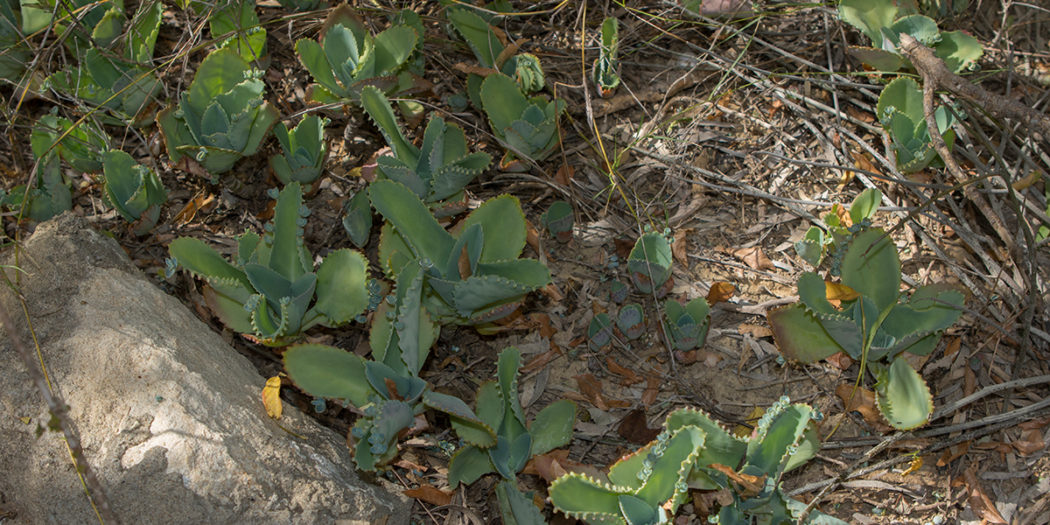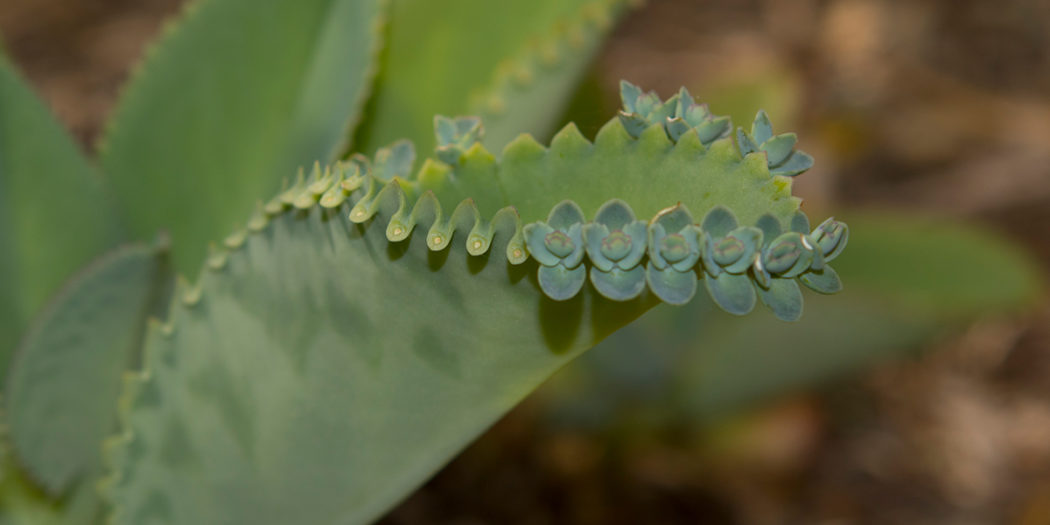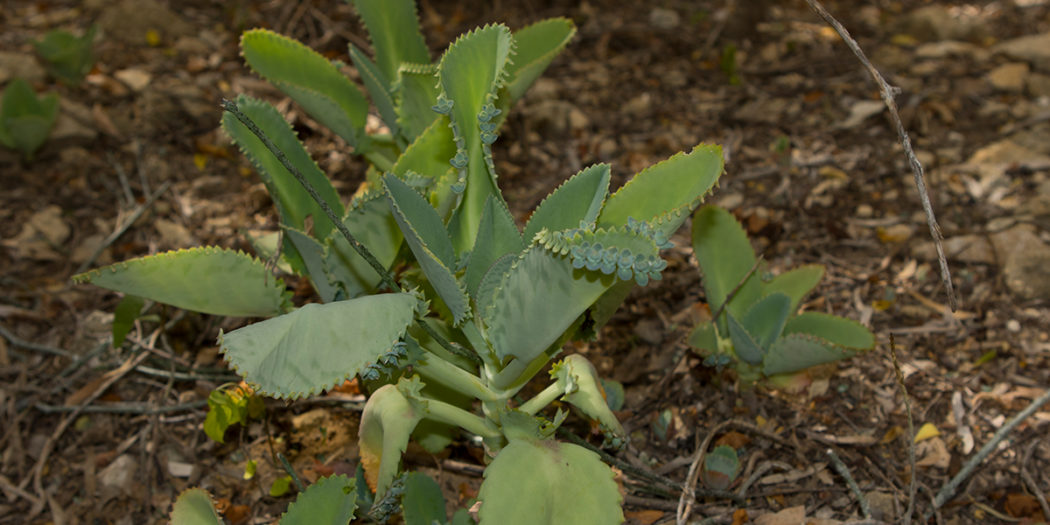In the south of Madagascar, many strange plants thrive. Only very special plants can adapt to the extremely dry and hot climate. One of them is the Mother of Thousands, with the scientific name Kalanchoe daigremontiana. It is still unclear whether the species should be assigned to the genus Kalanchoe or to the genus Bryophyllum. There is still a lack of further research to clarify this question conclusively.
The plant was first described scientifically in 1914 by two French botanists named Raymond-Hamet and Perrier de la Bâthie. They dedicated the name of the newly described plant to the Daigremont couple, who were also members of the former French Botanical Society.
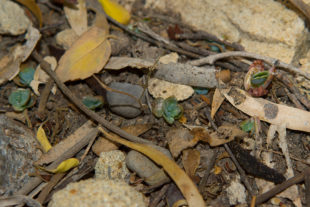
The Mother of Thousands grows mainly during the rainy season, which is very short in the south of Madagascar with only a few months. Under good conditions, it can grow up to one and a half meter high, in Madagascar it usually remains a little smaller. The triangularly pointed leaves are thickly fleshed and green on the upper side, violet spotted on the underside. They serve as a water reservoir for the plant. The leaf edges of the Mother of Thousands are full of small notches, which have a special function. At the tips of the notched leaves, the Mother of Thousands forms innumerable brood-buds. These small plant shoots fall to the ground at the slightest touch and directly form new plants. This enables the Mother of Thousands to reproduce even in bad years when there is little or no rain. Because of its easy reproduction, the Mother of Thousands is also cultivated outside Madagascar as a houseplant. It has even been introduced as a wild plant into some countries by humans, for example, Brazil, Venezuela, and South Africa.
In good rainy seasons, Kalanchoe daigremontiana blooms. A long stem grows upwards from the center of the plant and, like an umbrella, opens a multitude of beautiful red flowers pointing towards the ground. When the plant is fertilized, it produces four tiny bellows fruits per flower. These later drops with seeds less than a millimeter in size to the ground. The water of the rainy season decomposes the fruit and washes the seeds into the sand, where they sprout and grow into an independent plant. As soon as it becomes dry again in the south of Madagascar, the Mother of Thousands must feed on the water reservoir of its leaves. It can survive for months without rain.
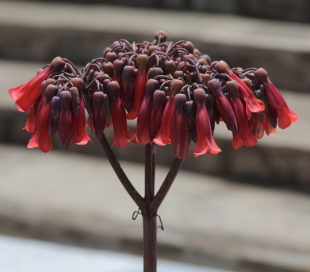
In order to be able to carry out photosynthesis despite the adverse conditions, the Mother of Thousands has come up with something. During the so-called CAM photosynthesis (Crassulacean Acid Metabolism) CO2 is absorbed, especially at night. It is temporarily stored as malate and only broken down during the day, releasing oxygen to the environment. As a result of the intermediate storage, the pH value in the leaves of the plant drops into the acidic range at night and only rises again during the day.
In Madagascar, traditional medicinal plants are still used a lot, especially in the south, due to the lack of modern medicine. The Mother of Thousands is considered a medicinal plant against premature labor in pregnant women and is used in cases of infertility. Its use is not without danger, because how much of the poisonous steroid Daigremontianin is contained in the used leaves of the plant is different for each plant. The amount of poison depends on location, available water, the individual plant and the season. Daigremontianin can lead to heart and kidney failure if the concentration is too high. It is only one of five bufadienolides known from Kalanchoe daigremontiana.
In its homeland Madagascar, Kalanchoe daigremontiana is mainly found along the river Fiherenana. It rises at the southwestern edge of the Ihorombe plain, where the Isalo National Park is located. Near the coastal town of Toliara (French: Tuléar), the Fiherenana flows into the Mozambique Channel. Those who do not have so much time during their trip to look for the plant themselves can also visit the Arboretum Antsokay near Toliara. The plant has been successfully cultivated there for years.
 MADAMAGAZINE Your Magazine about Madagascar
MADAMAGAZINE Your Magazine about Madagascar
